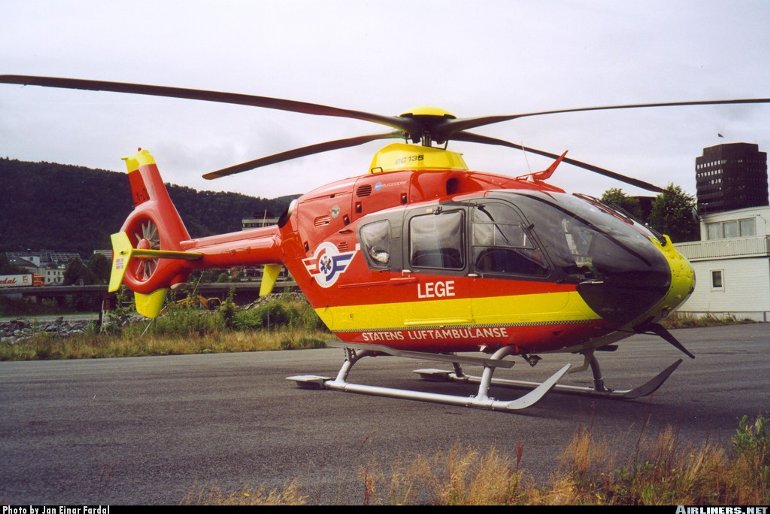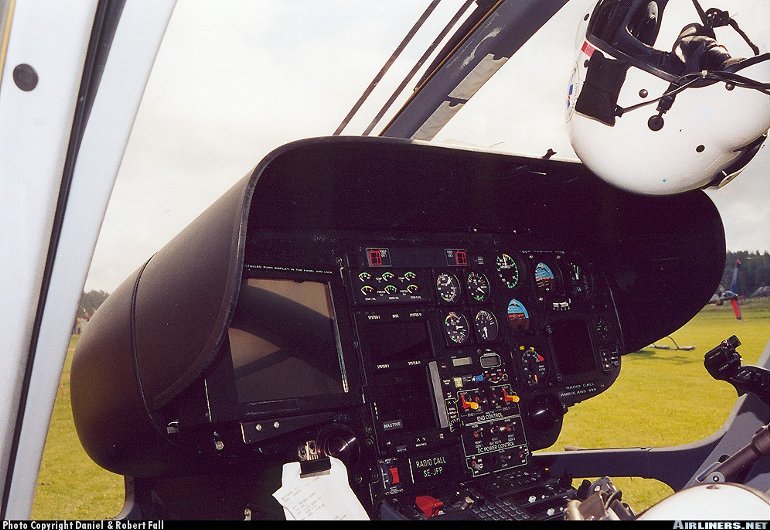Aircraft Technical Data
Eurocopter EC-135/635


| Details | |
| Country of Origin | Germany and France |
| Type | Seven place light twin turbine utility helicopter |
| History | The EC-135 is intended as a replacement for Eurocopter's successful BO-105 light twin, and is developed from the BO-108 technology demonstrator. The original MBB BO-108 was intended as a high technology helicopter demonstrator, and as such incorporated a range of high technology features including a hingeless main rotor (Sikorsky and Boeing adopted this design for their military RAH-66 Comanche), all composite bearingless tail rotor, shallow transmission (allowing greater cabin height) with special vibration absorbers, composite structures, improved aerodynamics, modern avionics and EFIS instrumentation. The first BO-108 was powered by Allison 250-C20R3 turboshafts and flew on October 15 1988. The success of the BO-108 test program led to MBB's announcement in January 1991 that it would develop a production 108 with Arrius or PW-206 engines as a replacement for the BO-105, with certification planned for 1994 and deliveries in 1995. However the formation of Eurocopter (in January 1992) gave the program access to Aerospatiale's Fenestron shrouded tail rotor technology which was then incorporated into the design. The combination of the BO-108 and the Fenestron led to the definitive EC-135 flying for the first time on February 15 1994. German certification was granted on June 14 1996, while US approval was given on July 31 that year, the same day as the first customer delivery. The PW-206 powered model is designated EC-135P-1, the EC-135T-1 has the Arrius 2B1. The designation for dedicated military versions is EC-635. |
| Powerplants | Either two 435kW (583shp) takeoff rated Turboméca Arrius 2B or two 463kW (621shp) takeoff rated Pratt & Whitney Canada PW-206B turboshafts driving a four blade main rotor and 10 blade shrouded Fenestron tail rotor. |
| Performance | Max cruising speed 257km/h (139kt). Max initial rate of climb 1653ft/min. Service ceiling 20,000ft. Hovering ceiling out of ground effect 13,260ft with Arrius 2B1s, 13,580ft with PW-206Bs. Range with standard fuel 745km (402nm), ferry range with long range tank 878km (474nm). Endurance with standard fuel 3hr 40min with Arrius 2B1s, 3hr 50min with PW-206s. |
| Weights | Empty with Arrius 2B1s 1465kg (3230lb), empty with PW-206s 1480kg (3263lb), max takeoff 2720kg (5997lb) or 2900kg (6393lb) with an external sling load. |
| Dimensions | Main rotor diameter 10.20m (33ft 6in), length overall rotor turning 12.16m (39ft 11in), fuselage length 10.20m (33ft 7in), height 3.62m (11ft 11in). Main rotor disc area 81.7m2 (879.5sq ft). |
| Capacity | Designed for single pilot operation. Alternative cabin layouts are for five (two forward & three rear) or seven (two + three + two) in passenger roles. Alternative EMS layouts for one stretcher, three medical attendants and the pilot, or two stretchers, two attendants and pilot. Stretchers loaded through rear freight door. |
| Production | First deliveries in July 1996. Total forecast sales of 700 units. By late 1998 orders stood at approx 110. |
| Related Links | Eurocopter EC-135/635 |
The backbone of this section is from the The International Directory of Civil Aircraft by Gerard Frawley and used with permission. To get your own copy of the book click here. |
|








